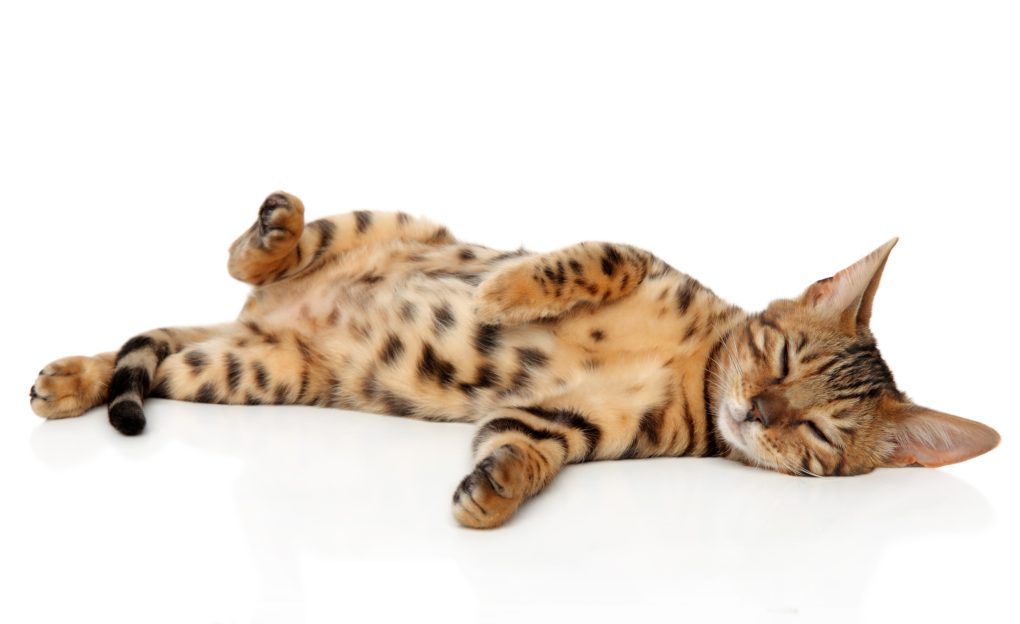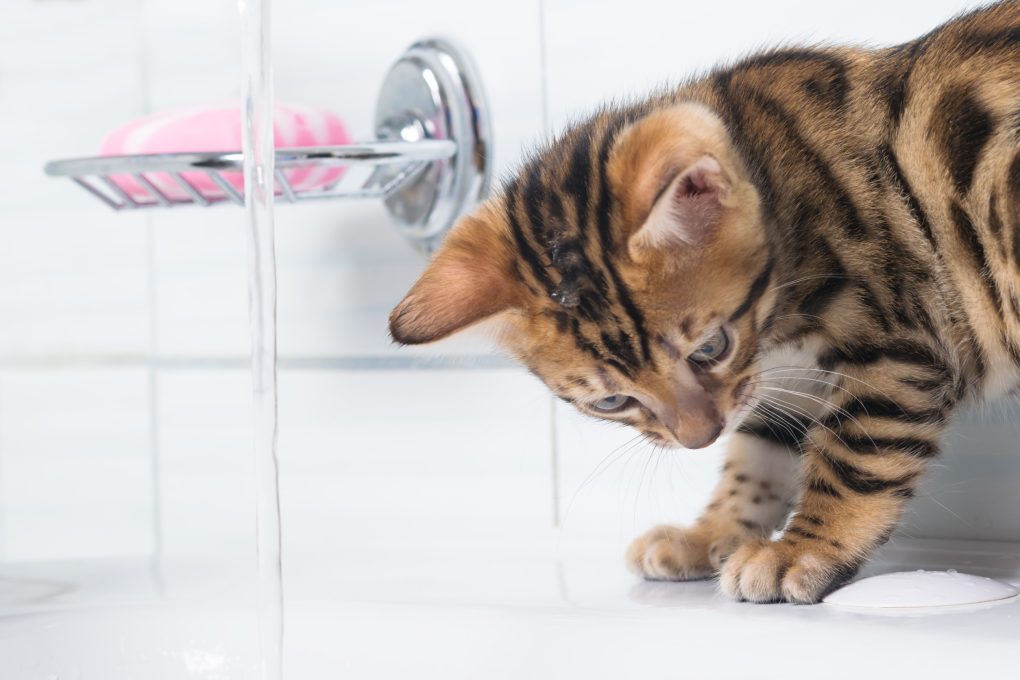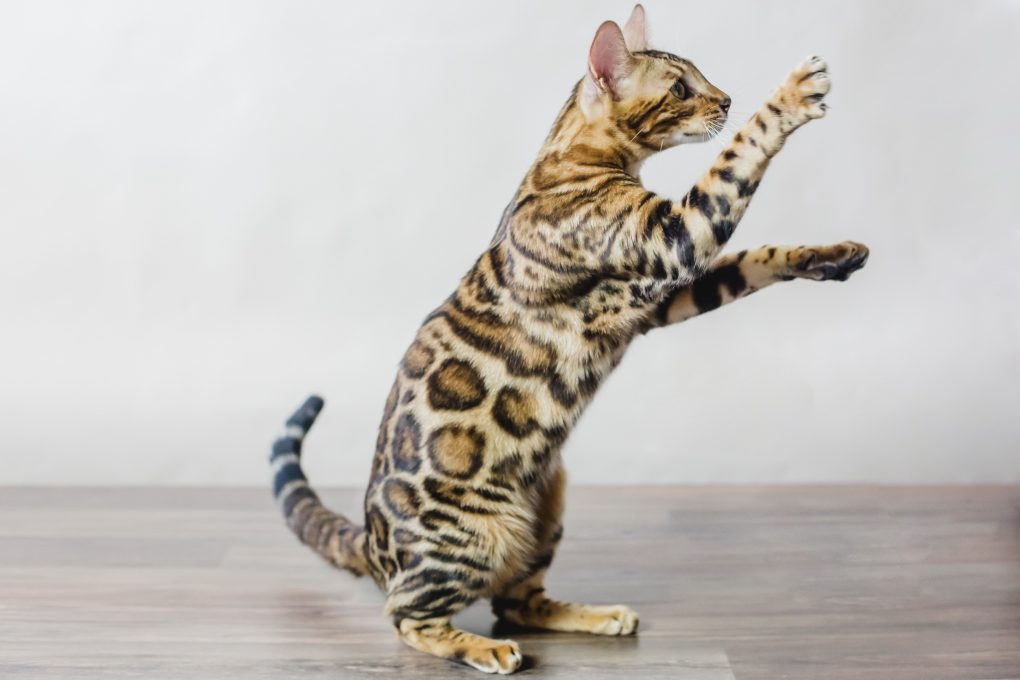Can Bengal Cats Have White Paws: White Markings on Bengals and Other Traits That Make Them Special
Yes, Bengal cats can have white paws. However, only a few rare Bengals may have white paw pads, which adds to the breed’s unique appearance. Bengal cats with white paws are likely a result of outcrossing this breed with a white domestic cat.
The Bengal breed can have a variety of coat patterns and colors, including spots or marbled patterns with white or light-colored fur on their paws or other parts of their body. Most Bengal cats have black paw pads, a common breed characteristic. These cat’s paw pads are used to walk and absorb impact and are essential for the cat’s ability to balance and walk.


Table of Contents
White Markings on Bengal Cats
Bengal cats can have various colors of fur, including white. However, some Bengal cats may have a higher concentration of this color in their fur than others. The white markings on the cat’s paws are a recessive gene, so it is rare to have a Bengal cat with white paws. If both parents have the gene, there is a greater probability that their offspring will have white paws.
However, there is no certain rule for white markings in Bengal cats. Some may have large patches of white fur, while others only have a few scattered spots of white fur on their paws. White markings could also vary depending on the litter or kitten. For example, if two kittens from the same litter inherit the white markings from one parent and not the other, the markings could vary widely between each kitten as they age.
White markings are not a sign of health or poor breeding. Instead, they are part of the cat’s natural coat coloration and don’t indicate anything about its personality or breeding history.
What Makes Bengal Cats So Special Aside From Their Paws
They Are Energetic
Bengal cats have lively and energetic personalities. These cats often have a quick and playful nature. They are active and enjoy engaging in various activities, such as climbing, jumping, and playing with toys. They have a strong hunting instinct and can be trained to retrieve and play fetch.
They also enjoy interactive play, such as playing with wand toys, laser pointers, and puzzle feeders. In addition, Bengal cat owners must provide plenty of physical and mental stimulation opportunities to keep them happy and healthy.
Physical stimulation for Bengals can include providing a climbing tree or cat tower for them to climb and explore, encouraging them to play with interactive toys, providing a scratching post to satisfy their natural scratching instinct, and creating a safe outdoor space for them to explore.
They Are Obsessed With Water


Bengal cats love water, so they are often called “the swimming cat. Bengal cats are proficient swimmers, making them excellent pets for those who live near bodies of water. They can easily navigate water obstacles and even enjoy swimming laps in the pool.
The Bengal cat breed has an ancestor wild cat known for being good swimmers, the Asian leopard cat. So, the Bengal cat may have inherited some of that aquatic trait.
It’s important to note that some Bengal cats may be more inclined to enjoy the water, while others may have no interest in it. This is a trait that can vary from cat to cat. For example, you can always introduce your cat to water in a safe and controlled environment and observe their reaction to decide whether they enjoy it.
They Can Be Very Vocal
Bengals are unique cats with a wide range of vocalizations. These include meows, purrs, and yowls, and they tend to chirp, chatter, and even make a noise that sounds like a bird.
Bengal cats make noises for a variety of reasons. They may make vocalizations to communicate with their owners or other cats or to express their emotions. Some Bengal cats may also make noises as a form of play or to express their curiosity about their surroundings. Additionally, Bengal cats are known for being highly active and energetic and may make noises to release pent-up energy.
A Bengal cat may make a specific noise to indicate that it is hungry or to signal that it wants to play. Vocalization also allows Bengal cats to establish and maintain social connections with other cats and their human owners. Additionally, sounds may serve as a form of territorial marking, allowing a Bengal cat to establish its presence and assert dominance over a particular area.
Vocalization is necessary for Bengal cats as it is a natural behavior, so it can signify that they are happy, healthy, and well-adjusted. It is also essential for cat owners to understand the meaning behind the vocalizations of their cats, as it can help them identify and address any potential issues or problems.
They Are Very Intelligent


Bengal cats are intelligent, curious, and active. They are often described as being highly trainable and enjoy learning new tricks and behaviors. They also have good agility and physical coordination, making them well-suited to agility training activities.
In addition, Bengals love to play, is very active and curious, are good problem solvers, can learn how to open doors and cabinets, and love dealing with puzzles and games.
Also, Bengal cats are known for their strong hunting instincts, and they may enjoy playing with interactive toys that mimic the movements of prey. They also have a high level of social intelligence and can often form strong bonds with their owners, which makes them a popular choice for many cat owners.
They Are Friendly
Bengal cats are friendly and outgoing. They are known to be friendly and affectionate with their owners and often enjoy being around people. They are known for their playful and energetic nature, which can make them a lot of fun to be around.
Bengals have a social nature and love the company of humans and other animals. They are not shy to show affection and are not aggressive, and are also known for their love of playing and can make great companions for adults and children.
However, it’s important to note that every cat is unique, and their personalities may vary. For example, some Bengal cats may be more independent and aloof than others. It’s also important to remember that socializing a cat from a young age will help them to become more friendly and outgoing.
